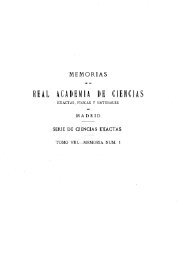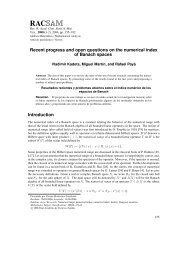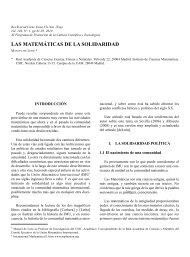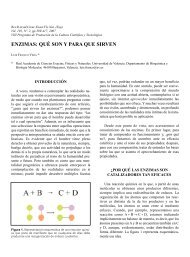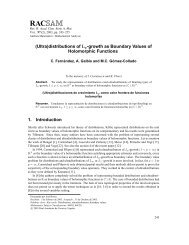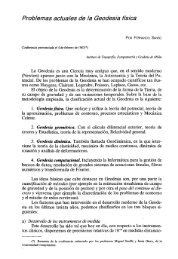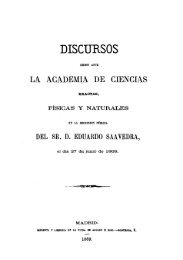The water footprint and virtual water exports of Spanish tomatoes
The water footprint and virtual water exports of Spanish tomatoes
The water footprint and virtual water exports of Spanish tomatoes
- No tags were found...
You also want an ePaper? Increase the reach of your titles
YUMPU automatically turns print PDFs into web optimized ePapers that Google loves.
D. CHICO et al. 25FIGURE 7. Average green, blue <strong>and</strong> grey <strong>water</strong> <strong>footprint</strong> (WF) <strong>of</strong> openair (rainfed <strong>and</strong> irrigated) <strong>and</strong> greenhouse production (l/kg)Source: Own elaboration.icantly even within the same province. Moreover, tomato<strong>and</strong> in general horticultural crops may be grown within awide range <strong>of</strong> production systems in mild climates. In the<strong>Spanish</strong> case, this whole range is covered, with production(albeit small) <strong>of</strong> rainfed tomato, low intensity traditionaltomato, highly productive intensive open-air tomato <strong>and</strong> themost intensive, even technology-driven greenhouse production(Maroto, 2002; Nuez, 1995).As already mentioned, there are sharp differences in the<strong>water</strong> <strong>footprint</strong> across production systems. Rainfed tomatoproduction has by far the highest <strong>water</strong> <strong>footprint</strong> with 966l/kg. <strong>The</strong> grey <strong>water</strong> <strong>footprint</strong>s <strong>of</strong> open-air irrigated <strong>and</strong>greenhouse production systems are small in comparison toit, partly due to their much higher yields. <strong>The</strong> Nitrogen bal-



